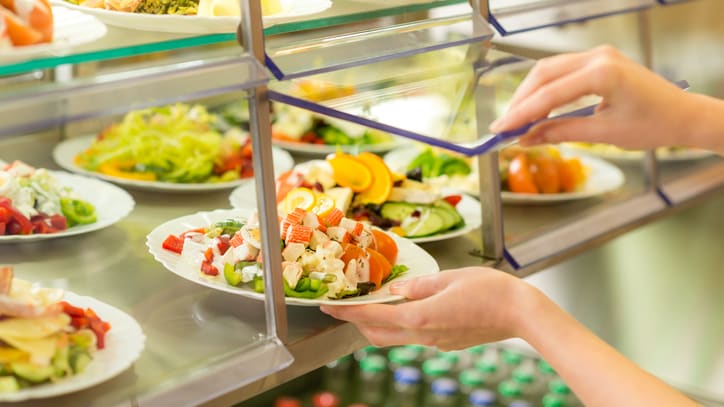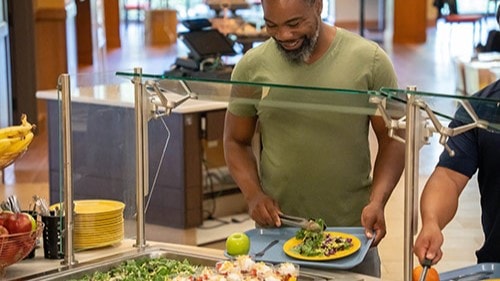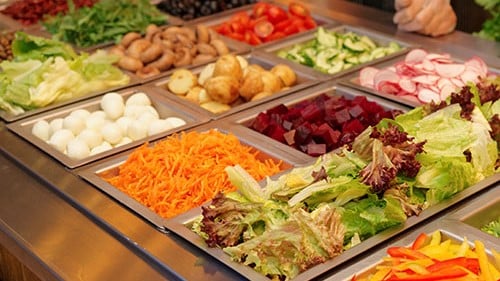At a glance
Behavioral design strategies facilitate food service guidelines by encouraging customers to select healthier items. These strategies can help make healthier items the default choice, an expectation or norm, easy to access, and less expensive. Learn more about the different categories of behavioral design strategies.

Introduction
Food service guidelines and behavioral design strategies inform, enable, and encourage customers to select healthy foods and beverages.
Definition
Many environmental factors can influence a person's actions and decisions when selecting, buying, and eating food. These include how foods are prepared, served, placed, presented, promoted, and priced. They also include the space's atmosphere, which is affected by lighting, sounds, smells, and the overall design and layout.
In food service, behavioral design strategies can make healthy options the default choice for consumers and the default standard for food service practices. The feasibility and effectiveness of each strategy depends on the food service venue and customer base. Combining strategies from multiple categories can improve the overall influence of an environment on the behaviors and choices of customers.
Using behavioral design strategies
Behavioral design strategies can be used by public health practitioners, institutional and building managers, and food service operators. Behavioral design can increase customer selection of healthier foods and beverages in cafeterias, micro markets, and vending machines. These strategies can be adapted in other venues such as food kiosks, concession stands, snack bars, sundry shops, and congregate meal settings, such as in eldercare facilities.
How to Use Behavioral Design Strategies offers a description of how to use behavioral design. Checklists provide sample diagrams to assess your venue and plan strategic actions.
See a summary of evidence supporting behavioral design for encouraging healthier food choices.

Behavioral design categories
The behavioral design standards in the Food Service Guidelines for Federal Facilities are organized into the six categories below. See Evidence for Behavioral Design Strategies for a more detailed description and supporting evidence for each category.
Placement and Layout: Strategically place foods and beverages and design the layout of food service venues to foster a selection of healthier foods and beverages.
Product Innovations and Defaults: Use product innovations and the inclusion of healthier options as default choices at decision points to encourage healthier choices.
Pricing and Promotion: Use price incentives and marketing strategies to highlight healthier food and beverage items.
Tableware: Promote healthy portion sizes through the size of plates, bowls, glasses, other dishware, and serving ware.
Information: Use information, displays, decorations, and signage to highlight healthier choices.
Organizational Policy: Adopt policies, practices, and programs that support a culture of health in your organization. These can also encourage the use of food service guidelines and behavioral design standards in all onsite food venues.
More behavioral design information
Next steps
Return to "Building Blocks"
Use the "Building Blocks of Food Service Guidelines" to navigate to other parts of the Food Service Guidelines Implementation Toolkit.






